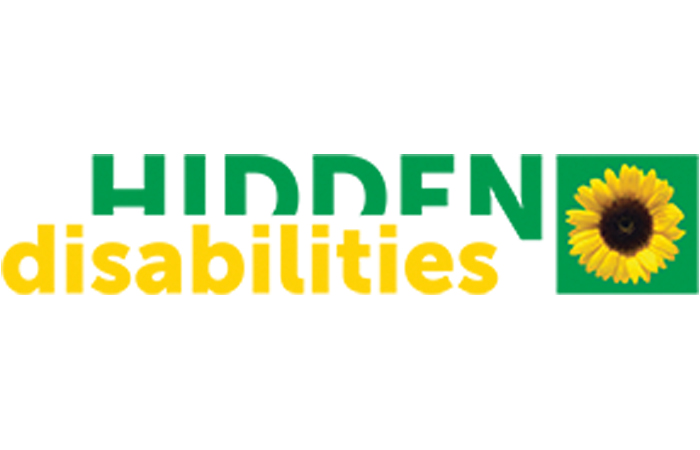In In-depth
Follow this topic
Bookmark
Record learning outcomes
One in five adults in the UK live with a disability, with 80 per cent of those having a non-visible impairment or condition1
Non-visible disabilities don’t usually have physical signs. Some can be visible or obvious sometimes, or may be noticed by people who have a better understanding of the condition.
Which disabilities are non-visible?
There is a wide range of non-visible disabilities including:
- Mental health conditions such as anxiety, depression, schizophrenia, personality disorders, obsessive compulsive disorder (OCD)
- Autism and Asperger’s syndrome
- Visual impairments or restricted vision
- Hearing loss
- Sensory and processing difficulties
- Cognitive impairment, including dementia, traumatic brain injury, or learning disabilities
- Non-visible health conditions, including diabetes, chronic pain or fatigue, respiratory conditions, incontinence.
Some people with non-visible disabilities might use mobility aids, others might have a ‘dynamic disability’ where they might use a mobility aid some of the time, and other people might use no aids at all. Many people may experience a combination of both visible and non-visible disabilities.
These conditions affect each individual differently and can make life painful, exhausting, and isolating. Another hurdle can be that the lack of visible signs of a person’s disability means others may not recognise or acknowledge the challenges they face, creating a lack of sympathy and understanding, and often making it difficult for people with non-visible disabilities to access what they need.
Tackling public perceptions
Katie Bennett-Hogg is a student at Sheffield University and has Ehlers Danlos Syndrome, a group of rare inherited conditions that affect connective tissue. She has a PEG-J feeding tube passed through her abdominal wall into her stomach, along with a port and a suprapubic catheter (SPC), but as these are hidden under her clothes people don’t always realise she is living with health challenges.
“Living with a disability is hard enough without worrying about other peoples’ opinions,” she says. “Even taking a seat on a bus or in the chemist worries me because of what other people are thinking about the ‘young, healthy looking’ lady taking a seat from the elderly. Today I was tutted at when parking in a disabled space. I had all these tubes hidden under my clothes, so I looked like a young, healthy person. But in reality, I still have a disability, despite choosing to hide my tubes. There are so many disabilities out there – both physical and mental – that are invisible and people shouldn’t need to explain themselves to anyone.”
Mental health challenges
People living with mental health conditions such as anxiety or depression can also have their health challenges overlooked by a world which remains slow to recognise and support those not immediately and easily identifiable as having a disability.
“In the past, there has tended to be greater focus in public life and spaces on providing support for people with visible disabilities,” says Stephen Buckley, head of information at mental health charity Mind. “However, it’s really important that we provide this same focus for people living with non-visible disabilities – like mental health conditions – who also need and deserve reasonable adjustments to their daily life and can find it difficult to access what they need.”
'hidden', 'invisible' or 'non-visible'?
Some people prefer the phrase ‘non-visible’ to describe their disabilities that are not obvious. This can be because the word ‘invisible’ can imply the disability does not exist, or the term ‘hidden disability’ can make it sound as if the person is concealing their disability on purpose. Similarly, ‘less-visible’ disability does not cover those conditions that are completely non-visible.
“Living with a disability is hard enough without worrying about other peoples' opinions.”
Finding extra support schemes
Having a non-visible disability can be just as life-affecting for a person as a visible one, and the kind of support that people with non-visible disabilities need differs.
Everyday activities such as travel, work, shopping and socialising can be difficult for people with non-visible disabilities, and while everyone’s impairments and health conditions vary, Fazilet Hadi, head of policy at Disability Rights UK, says all disabled people “share the common experience of society not designing and delivering services that meet our needs”.
Of course, nobody has to disclose that they have a disability, or explain what it is, so the best course of action is to listen to what support the person says they need rather than assuming what is best for them.
In addition, Fazilet says many disabled people “don’t feel confident sharing information about personal health, so it is important that services are run in a disability inclusive way for all customers. This includes: not making assumptions about people but giving them time to explain individual needs; making sure that written information is accessible to everyone; making it easy to enter and navigate premises; and ensuring that instructions on taking medicine is shared in the most useful way”.
Some people with non-visible disabilities may choose to wear a lanyard or carry a badge to show that they have a non-visible disability and may need extra support, and there are several schemes which facilitate this.
The Hidden Disabilities Sunflower lanyard scheme is a starting point for pharmacies to support their customers with invisible disabilities. Originating in 2016 when London Gatwick Airport looked at how it could support passengers with a non-obvious disability, the solution was to create a lanyard with a simple sunflower design on a green background intended to be a discreet sign enabling airport staff to recognise that the wearer (or someone with them) may require some extra help, time or assistance when moving through the airport.
The success of this simple but effective idea and the positive response it received has led to the Sunflower Lanyard Scheme being widely adopted in the UK by retailers, travel networks, police forces, NHS trusts, leisure facilities and other businesses and organisations.
Finding extra support schemes
Having a non-visible disability can be just as life-affecting for a person as a visible one, and the kind of support that people with non-visible disabilities need differs.
Everyday activities such as travel, work, shopping and socialising can be difficult for people with non-visible disabilities, and while everyone’s impairments and health conditions vary, Fazilet Hadi, head of policy at Disability Rights UK, says all disabled people “share the common experience of society not designing and delivering services that meet our needs”.
Of course, nobody has to disclose that they have a disability, or explain what it is, so the best course of action is to listen to what support the person says they need rather than assuming what is best for them.
In addition, Fazilet says many disabled people “don’t feel confident sharing information about personal health, so it is important that services are run in a disability inclusive way for all customers. This includes: not making assumptions about people but giving them time to explain individual needs; making sure that written information is accessible to everyone; making it easy to enter and navigate premises; and ensuring that instructions on taking medicine is shared in the most useful way”.
Some people with non-visible disabilities may choose to wear a lanyard or carry a badge to show that they have a non-visible disability and may need extra support, and there are several schemes which facilitate this.
The Hidden Disabilities Sunflower lanyard scheme is a starting point for pharmacies to support their customers with invisible disabilities. Originating in 2016 when London Gatwick Airport looked at how it could support passengers with a non-obvious disability, the solution was to create a lanyard with a simple sunflower design on a green background intended to be a discreet sign enabling airport staff to recognise that the wearer (or someone with them) may require some extra help, time or assistance when moving through the airport.
The success of this simple but effective idea and the positive response it received has led to the Sunflower Lanyard Scheme being widely adopted in the UK by retailers, travel networks, police forces, NHS trusts, leisure facilities and other businesses and organisations.
References:
Further information
The Hidden Disabilities Sunflower lanyard scheme is building an index of disabilities that have few or no outwardly visible signs in order to raise awareness of the wide range of non-visible disabilities that Sunflower Lanyard wearers experience. The scheme also provides training for organisations on how to support Sunflower wearers and consider workplace accommodations for colleagues and customers based on their specific invisible disability. Find out more.



